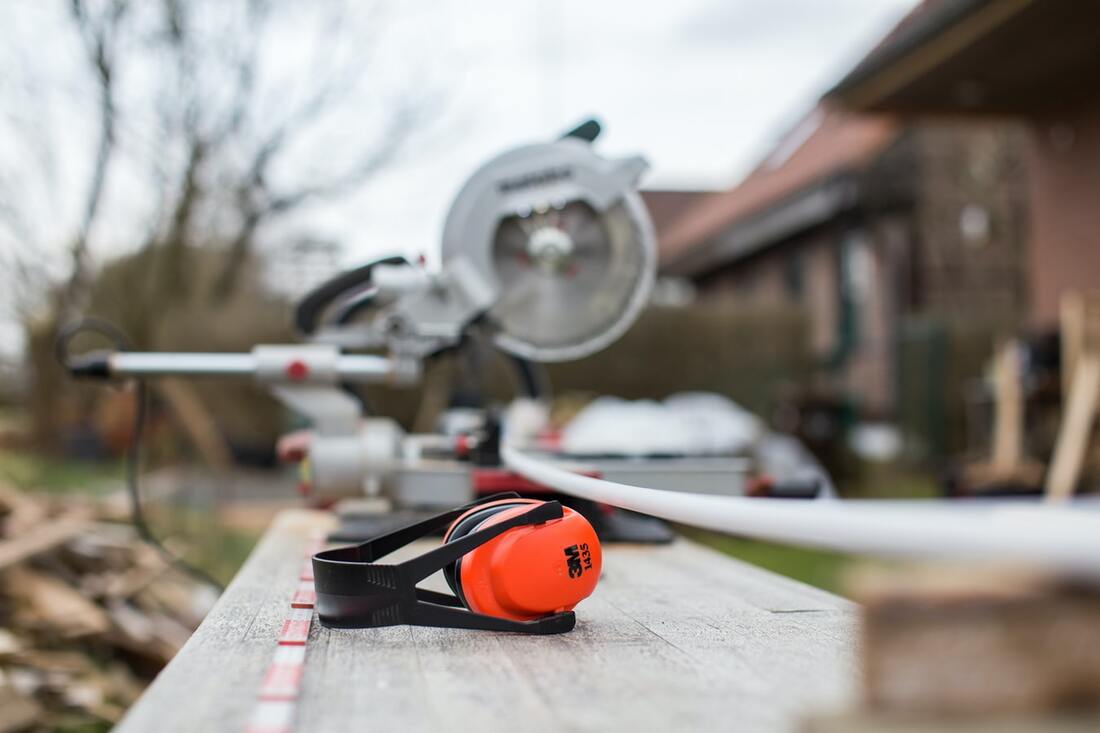|
Advice on How to Protect Your Hearing Health
Exposure to dangerously loud repetitions can result in permanent hearing loss, tinnitus, and difficulty with comprehending speech when there is background noise. Take precautions by reducing the chances of noise-induced hearing loss (NIHL).
Hearing protection is labeled with a Noise Reduction Rating (NRR). NRR is measured in a laboratory and the vast majority of individuals receive much less noise reduction than the NRR indicates. Overall, hazardous sounds need 5 or 10 dB of noise reduction to be considered safe. Just about any properly fitted, hearing protection may provide 10 dB of protection. In order to determine if your hearing protection is properly fit, listen for a shift in how you can hear your own voice. If your voice sounds fuller, deeper, or more hollow, you probably have a correct fit. If you are exposed to sounds that reach at least 100 dBA or more (for example from a jackhammer) or a sudden loud noise (from a nail gun or firearm), it is recommended that you wear twice as much hearing protection (such as wearing earmuffs over your earplugs). Take Your Listening Environment into Consideration Think about whether you need to wear eyeglasses, sunglasses, or any other type of eye protection. Maybe you need to wear a hat, helmet, or another type of head protection. These accessories may interfere with how a pair of earmuffs are sealed. Earmuffs may feel uncomfortable in humid climates; the cushions on earmuffs may not be completely sealed off in colder environments. Earplugs can be an alternative option. If your hands are bound to get dirty, do not use foam earplugs (these need to be rolled smaller with your fingers prior to inserting them into your ear canals). Think about what type of noises you are hearing. Are the sounds continuous or intermittent? Earmuffs and pre-formed earplugs can be easily removed and frequently replaced than foam plugs. Having corded earplugs are convenient if you don’t have pockets or a purse. If you are listening to music or need to talk to others while wearing your ear protection, you can use flat attenuation earplugs or earmuffs (or musician’s earplugs) in order to preserve sound consistency. Maybe you’ll be in a quiet setting, but there will be spontaneous eruptions of sound, like fireworks. Level-dependent, or sound restoration, hearing protectors let sounds permeate through when it’s quiet and become a safeguard for your hearing when noises get loud. Take Comfort and Convenience into Consideration Sort out which type of hearing protection is suitable, based on your noise exposure and how you intend to use them. It’s important to keep in mind that the hearing protection will only work if you wear them consistently and properly each time you are prone to dangerous noise levels. Select protection that benefits your needs and feels comfortable.
0 Comments
Your comment will be posted after it is approved.
Leave a Reply. |
Categories
All
|
-
products
- Rexton Emerald M 8C RIC
- Rexton inoX CIC 8C
- Rexton Mosaic M 8C BTE
- Rexton Mosaic P 8C BTE
- Rexton Stellar RIC 8C
- Rexton Sterling 8C CIC / IIC
- Rexton Sterling 8C ITE / ITC
- Rexton Emerald XS 8C RIC
- Rexton Emerald S 8C RIC
- Signia Active Pro
- Signia CROS AX
- Signia CROS Hearing Solutions
- Signia Insio Charge&Go AX
- Signia Insio Nx IIC/CIC
- Signia Insio Nx ITC/ITE
- Signia Intuis 3 Family
- Signia Motion Charge&Go X
- Signia Motion 13 Nx/Motion 13 P Nx
- Signia Prompt
- Signia Pure Charge&Go AX & T AX
- Signia Pure 312 AX
- Signia Pure 10 Nx
- Signia Pure 13 BT
- Signia Pure 13 Nx
- Signia Silk X
- Signia Styletto AX
- Signia Styletto X
- SERVICES >
- about
- blog
- Insurance
- contact
|
© 2023 Pure Sound Hearing Aids. All Rights Reserved.
|
Proudly powered by Weebly
-
products
- Rexton Emerald M 8C RIC
- Rexton inoX CIC 8C
- Rexton Mosaic M 8C BTE
- Rexton Mosaic P 8C BTE
- Rexton Stellar RIC 8C
- Rexton Sterling 8C CIC / IIC
- Rexton Sterling 8C ITE / ITC
- Rexton Emerald XS 8C RIC
- Rexton Emerald S 8C RIC
- Signia Active Pro
- Signia CROS AX
- Signia CROS Hearing Solutions
- Signia Insio Charge&Go AX
- Signia Insio Nx IIC/CIC
- Signia Insio Nx ITC/ITE
- Signia Intuis 3 Family
- Signia Motion Charge&Go X
- Signia Motion 13 Nx/Motion 13 P Nx
- Signia Prompt
- Signia Pure Charge&Go AX & T AX
- Signia Pure 312 AX
- Signia Pure 10 Nx
- Signia Pure 13 BT
- Signia Pure 13 Nx
- Signia Silk X
- Signia Styletto AX
- Signia Styletto X
- SERVICES >
- about
- blog
- Insurance
- contact


 RSS Feed
RSS Feed